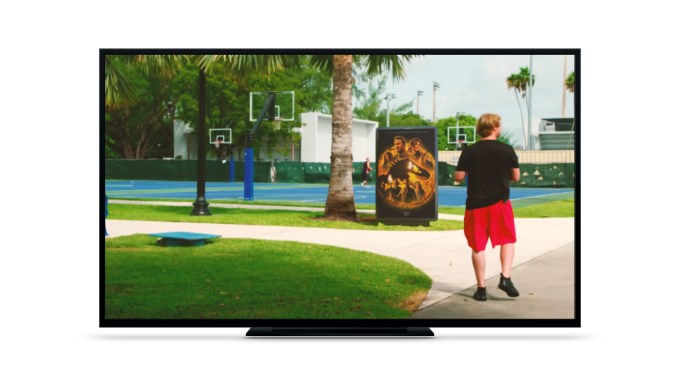Announced at this month’s NewFronts, Amazon and Peacock demonstrated new ad formats that use similar virtual product placement (VPP) tools, a post-production technique for inserting a brand into a TV show or movie scene.
Amazon presented its new VPP tool, currently operating in beta, that lets advertisers place their branded products directly into streaming content after they have already been filmed and produced. Meanwhile, Peacock’s new “In-Scene” ads will identify key moments within a show and digitally insert a brand’s customized messaging or product post-production so the brand is showcased in the right TV show/movie and at the right time.
Product placement is nothing new and has long been a holy grail of the advertising industry. In 2019 alone, product placement in the U.S. garnered about $11.44 billion, per Statista data. That same year, approximately 49% of American viewers took action after seeing product placement in media.
Brands that use product placement in movies and TV shows capture target markets and promote products in a subtle way. Research by Sortlist revealed that, on average, customers are being sold 12.61 products per movie without even noticing.
However, the strategy is outdated, and products used in the content, for instance, a can of coke on a table, are decisions that are made months in advance.
Streaming services are rethinking this technology and using virtual product placement allows the platform to introduce new ads in the future and remonetize a piece of content over and over again.
In an illustrative video, Amazon demonstrated how its new VPP program enables brands to strategically insert products post-production into content streaming from Amazon Prime Video and the newly rebranded Amazon Freevee. The video shown at Newfronts had an M&Ms billboard (pictured above) that was digitally added way after the show had been filmed.
Colleen Aubrey, Senior Vice President, Advertising Products & Tech at Amazon, explained to the audience, “Working with content creators and using machine learning, we’re able to insert products and branded findings into a TV show or movie.” Billboards, signs, and screens in any chosen show can now have specific messaging on the streamer. Amazon will now be able to integrate different products into episodes at different moments and scenes.
She added that the M&M’s virtual product placement drove an almost 7% increase in brand favorability and almost a 15% increase in purchase intent. This gives advertisers the ability to bring their brands “in the content instead of just around,” she said, giving more flexibility and opportunity for customers to easily discover and engage with products. “Amazon ads are helping advertisers create long-term connections with customers in very everyday interactions,” Aubrey said.
The virtual product placement beta program has already been implemented in several Prime Video and Freevee original series such as “Tom Clancy’s Jack Ryan,” “Bosch: Legacy,” and the overall Bosch franchise, “Reacher,” and “Leverage: Redemption.”
Henrik Bastin, Chief Executive of Fabel Entertainment and Executive Producer of “Bosch: Legacy,” said, “Virtual product placement is a game-changer. It creates the ability to film your series without thinking about all that is required with traditional placements during production. Instead, you can sit with the final cut and see where a product could be seamlessly and naturally integrated into the storytelling.”
Peacock also announced their own digitally inserted ad strategy at NewFronts. The new In-Scene Ads are designed to strengthen commercial opportunities with marketing partners, seamlessly blending products and/or messaging with content during post-production to insert advertisements during scenes that are deemed relevant to customers.
John Jelley, SVP of Product and UX at Peacock, said, “The majority of Peacock customers are opting for our ad-supported experience,” he said, “and we remain focused on collaborating with our brand partners to develop innovative, personalized ad experiences that continue to enhance the customer experience.”
While maybe not as “mind-blowing” as people think, the possibility of customizing ads for different users is fascinating to think about.
The unique technology brought forth by Peacock, Amazon Prime Video, and Amazon Freevee has the potential to transform ad-supported streaming. The insertion of carefully curated, digitally implemented ads could become the new way streaming platforms and their marketing partners target audiences and increase ad revenue.
We’re curious to see how other streaming services improve their advertising methods. Especially now that ad-supported options have become more popular. Netflix and Disney+ are the latest to announce upcoming cheaper ad-supported tiers.
















 English (US) ·
English (US) ·